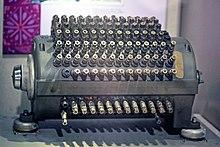Introduction
Artificial Intelligence (AI) has reshaped countless industries, and its impact on music is nothing short of revolutionary. From the early days of algorithmic experiments to advanced AI models like OpenAI’s MuseNet and Google’s Magenta AI, the evolution of AI music has been a fascinating journey. In this blog post, we will take a look at the origins of AI music, its development, and its impact on the music industry.
The Early Days of AI Music
The concept of AI music traces back to the 1950s when computer scientists first explored the idea of using algorithms to compose music. A landmark moment in this era was the creation of the Illiac Suite in 1957 by Lejaren Hiller and Leonard Isaacson. This groundbreaking piece, generated using the ILLIAC I computer, followed rules derived from traditional music theory, marking the first significant example of AI-generated music.
The 1980s saw further progress with David Cope’s Experiments in Musical Intelligence (EMI). This project analyzed different styles of classical composers like Bach and Mozart, producing compositions that closely resembled their work. Cope’s EMI highlighted the potential of AI to emulate complex musical styles.

The Rise of Modern AI Music
The advent of machine learning in the 21st century revolutionized the field of AI-generated music. Unlike earlier rule-based approaches, modern AI can learn patterns and create music autonomously. As a result, the landscape of AI music technology has evolved remarkably, with groundbreaking tools and frameworks emerging to enhance the creative process. One of the pivotal advancements in this arena is the utilization of deep neural networks, which have redefined how AI can generate music.
Google’s Magenta AI
In 2016, Google introduced Magenta AI, a research project focused on using machine learning to create music. Magenta released its first AI-generated piano melody, demonstrating the capabilities of neural networks in generating original musical compositions. It leverages sophisticated algorithms to produce innovative compositions by analyzing vast datasets of music. This framework allows users to create unique melodies and harmonies, pushing the boundaries of traditional music composition. Magenta AI continues to inspire new approaches to AI music creation, providing tools for artists and developers to explore creative possibilities.
OpenAI’s MuseNet
In 2019, OpenAI launched MuseNet, an AI model capable of generating complex compositions spanning multiple genres and different instruments. MuseNet is built on a deep neural network trained on diverse musical datasets, enabling it to blend styles, tempo and produce harmonized pieces. With MuseNet, OpenAI showcased the power of AI in simulating human-like creativity, sparking conversations about the future of music.
Albums Generated by AI
AI has also been used to create entire albums, such as "I AM AI" by Taryn Southern, which was released in 2018. The album was created using AI algorithms, with Southern providing input on the melodies and lyrics but leaving the composition and arrangement to the AI system.
Continuous Innovations in AI Music Technology
The rise of AI music technology didn’t stop there. Other more specialized and advanced AI music tools, like Staccato, are joining pioneers such as Google Magenta and OpenAI MuseNet. These tools utilize machine learning techniques to assist musicians in crafting intricate melodies, chords, rhythms, and soundscapes.
Staccato distinguishes itself by expertly balancing simplicity, flexibility, and high-quality results. It outputs MIDI, allowing musicians to easily customize and integrate generated music into their projects. Staccato’s AI MIDI VST seamlessly integrates with Ableton Max for Live (Beta) and all major DAWs (in development).
By incorporating AI seamlessly into workflows, artists can explore new creative territories, transforming the way music is composed, arranged, and produced. This synergy between technology and creativity exemplifies the exciting future of AI in music, as showcased by the best AI music apps available today.
The Future of AI Music: Impact and Ethical Challenges of Algorithm on the Music Industry
AI’s growing role in the music industry opens up exciting possibilities for musicians and composers:
Creative Collaboration:
AI can inspire musicians by generating ideas and helping with composition.
Accessibility:
AI-powered tools simplify music production, empowering individuals without formal training to create professional-quality music.
Creativity:
AI enables the discovery of new genres and sounds.
Customization:
AI-generated music is increasingly used in industries like gaming, advertising, and film, providing tailored soundtracks.
Yet, challenges remain. Critics argue that AI music may lack the emotional depth of human compositions. Ethical concerns about authorship and copyright also loom large as AI-generated music becomes more prevalent. Who owns AI-generated compositions? How do we preserve the human touch in music? Striking a balance between leveraging AI’s capabilities and maintaining artistic integrity will be crucial as AI continues to transform the music landscape.
Choosing Staccato offers a robust solution to these issues. Staccato is designed to enhance human creativity, allowing musicians to infuse their unique emotional expression into AI-assisted compositions. Additionally, Staccato addresses ethical concerns by using fairly sourced musical data, ensuring that creators retain full ownership rights to their music.
Conclusion
AI-generated music has come a long way since its inception in the 1950s. With each technological advancement, the field continues to push creative boundaries, offering new possibilities while posing complex ethical challenges. As we move forward, embracing the benefits of AI music while addressing its implications will help shape a future where technology and human artistry coexist harmoniously.
FAQ
What is MuseNet and how does it work?
MuseNet is an AI-powered music generator developed by OpenAI, aiming to compose music across various genres and styles. It operates by processing vast amounts of musical data as training data to learn patterns of harmony and structures, allowing it to create original compositions that mimic the style of various composers or genres.
Is MuseNet AI still available?
No, MuseNet AI is not currently available. OpenAI discontinued the service in December 2022, and it has remained offline since then.
How can I access MuseNet?
Unfortunately, you cannot access MuseNet. OpenAI has taken the service offline and discontinued it since December 2022.
What datasets does MuseNet use to train their algorithm?
MuseNet’s training dataset comprises hundreds of thousands of MIDI files from various sources, including ClassicalArchives, BitMidi, the MAESTRO dataset, and online collections. These files cover a wide range of musical styles and genres, from classical to contemporary pop, and were transformed during training to enhance the model’s versatility.
What is the best AI music generator? Do they output MIDI?
While the best AI music generator depends on your specific needs, Staccato stands out as a top choice. Unlike some platforms like Jukedeck that only output audio, Staccato offers MIDI output, giving musicians the flexibility to customize and integrate the generated music into their projects seamlessly. Alongside other popular tools such as Amper Music, AIVA, and Magenta Studio, Staccato excels in balancing simplicity, flexibility, and high-quality results, making it ideal for both beginners and professional musicians. You can try Staccato directly in your browser or use its DAW VST for effortless integration into your existing workflow.

Dr. Jeffrey Lupker - Co-founder, Staccato
International Speaker & Published Author on Deep Learning & Music.
Dr. Lupker has published peer-reviewed journal articles and book chapters and has given lectures internationally in the fields of deep learning, machine learning and music. Beyond Staccato and his own research, Dr. Lupker is an active performer on guitar and keyboards and has played across Canada and USA with award winning artists.